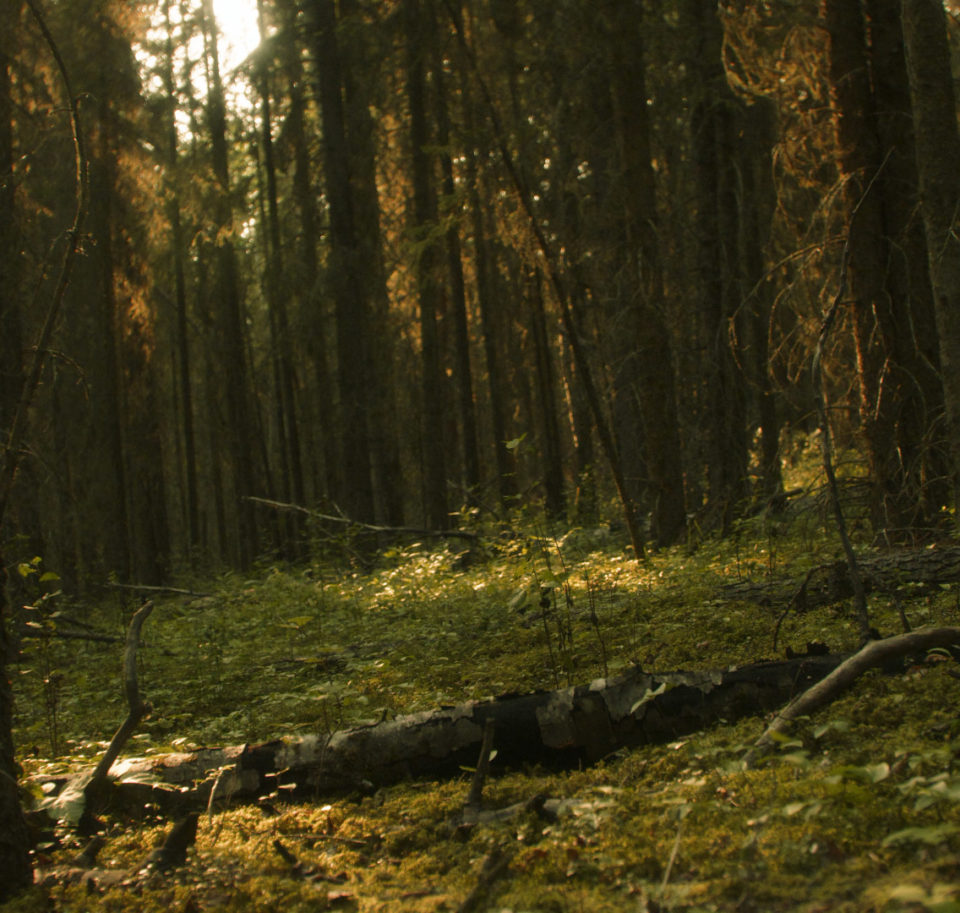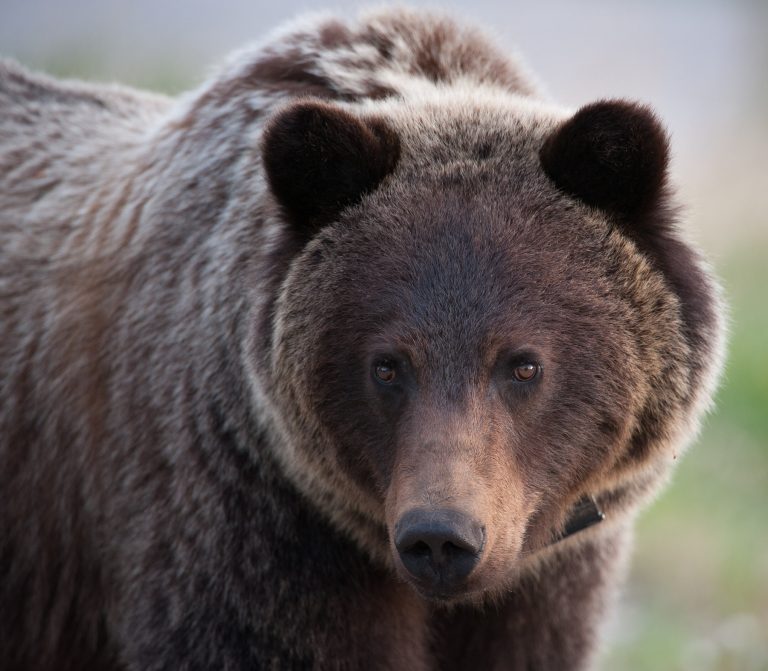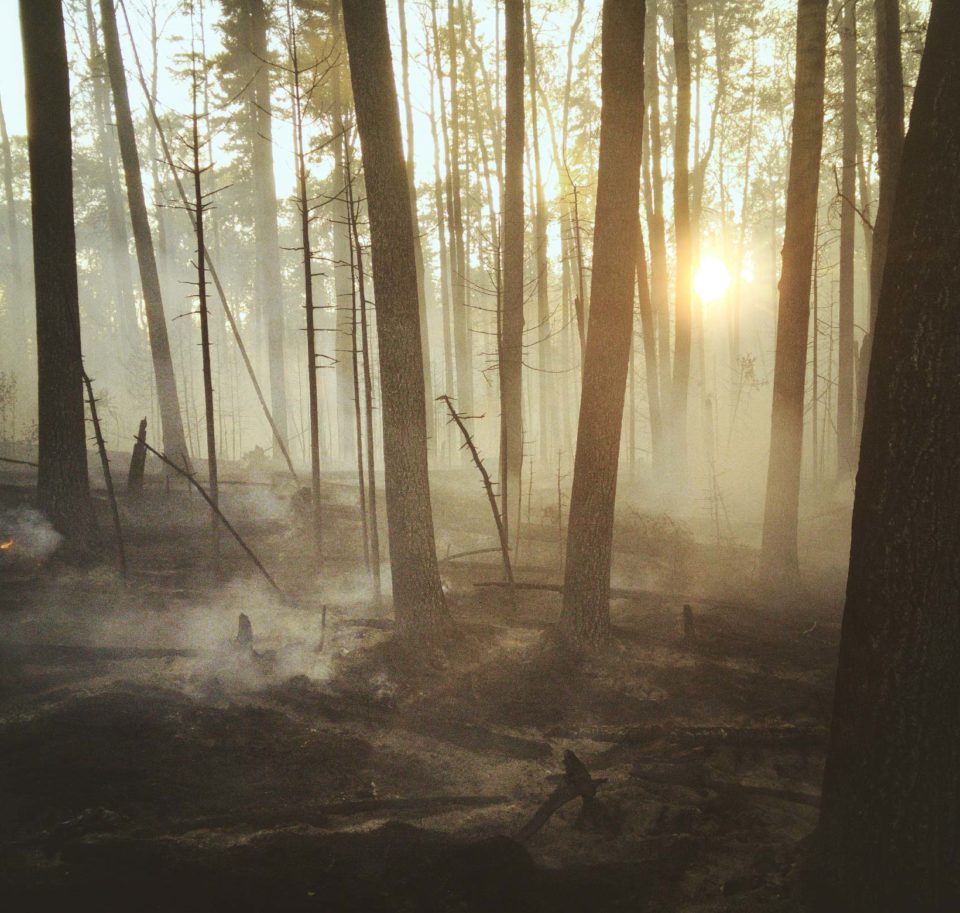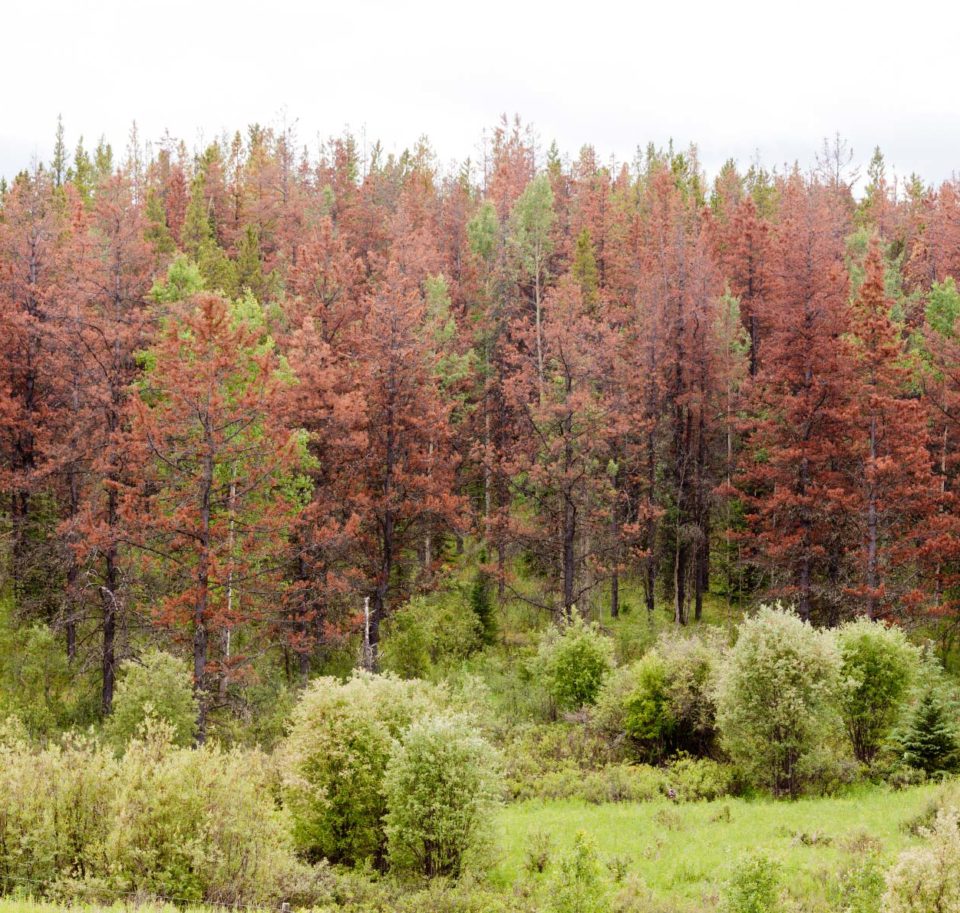Alberta’s forests are one of the most important natural resources our province has. Forest management is the term for all of the planning and processes that go into securing the future of that resource.
Our industry is responsible for stewardship of the forests where we work – companies operating on public lands operate according to long-term Forest Management Plans that forecast 200 years into the future. These plans are re-evaluated every 10 years with more detailed five-year General Development Plans and more operational, Annual Operating Plans.
We have to consider not just the immediate impact of what we do, but what the implications will be for future generations. That means making sure that we never harvest too much, that we consider important aspects of the forest like water sources and wildlife habitat, and that we mitigate risks like wildfires or mountain pine beetle infestations that can threaten Alberta forests or communities.

EXPLORE THE FOREST
Our boreal forests lead pretty incredible lives. Trees don’t talk about themselves very much, but Nathan Fillion does – and he’d be happy to tell you all about the forest too, while he’s at it.
Take a (virtual) guided tour with Nathan through a young, growing Alberta forest. Or one that’s in the prime of its middle age, or a mature forest that’s getting a little help to keep standing strong.
Forest Management Life Cycle
Alberta’s forest management practices are based on the natural cycle of growth and disturbance in our forests. Forest management operates on a cycle too. Careful planning, monitoring and adapting plans as needed are built into each stage of the cycle.
- Site preparation
- Planting seedlings
- Management of young forest to promote healthy growth
- Cone and seed collection for future seedlings
- Forest monitoring to ensure growth continues
- Research for future planning
- Data collection and surveys
- Managing forests in coordination with other land users to minimize footprint
- Adaptive Management
- Monitoring growth and disturbances and adapting management techniques to help maintain the health of our forests
- Sustainable Harvesting
- Retain structures for wildlife
- Protect water flow and quality
- Protect soil

Oversight and Regulations
Alberta forestry companies are given license to operate by the Government of Alberta through a system of forest tenures.
The provincial government sets regulations, standards, and policies that govern what is and isn’t permitted – for example, they set limits on how much timber can be harvested every year and where, and require extensive public and Indigenous community consultation before work starts in the forest. The Government of Alberta provides information on forest tenures and harvesting rights here.
To earn the right to operate in Alberta’s forests, companies need to show that they’ll meet or exceed the government’s standards. We work to ensure that we plant more than we harvest, that the people who live near our operations have a chance to give their input, and that important ecosystem features like water sources and wildlife are carefully managed in our planning and operations.

Certified Sustainable
Alberta’s environmental regulations around forest industry activity are some of the strongest in the world.
Forestry companies are accountable for complying with those regulations. Many companies also pursue certification to sustainability standards set by independent non-profit organizations. Achieving certification to those standards ensures all legal requirements are met, but can also include voluntary measures beyond what the law requires.
There are some differences among the standards set by different certification regimes, but over time they have become more similar as best practices emerge.
The Sustainable Forestry Initiative (or SFI) is one of the most common certification programs Alberta forestry companies participate in. SFI is a non-profit organization that awards certifications based on measures to recognize and respect Indigenous Peoples’ rights, protect water quality, biodiversity, wildlife habitats and species at risk, and other important social and environmental considerations. Some companies are also certified by the Forest Stewardship Council (FSC), another non-profit organization that awards certification for forests that are managed to preserve biodiversity, benefit local people and workers, and sustain economic viability.

Wildlife
Alberta’s forests are rich ecosystems that support thousands of different wildlife species.
The forest industry has a regulatory and ethical responsibility to ensure that our operations consider the needs of wildlife, and minimize any risk our activities could pose to wildlife populations – that includes measures like identifying and mapping animal habitats in the forests where we work, protecting habitat to support wildlife populations, timing harvests for parts of the year where they cause the least disruption, and collaborating with ecologists and wildlife biologists on our forest plans.
Some animals, like grizzly bears, actually benefit from “edge habitat” that is created when sections of forest are disturbed and then renewed. This can occur through natural events like wildfire and natural regeneration, or through harvesting and tree planting. Other species, like caribou, need mature forest, while still others do best in young or middle-stage forests. Aquatic species like trout need to be considered too. Responsible forest management means planning for all of these different needs and working with biologists and wildlife researchers to develop best practices in supporting all species.

FIRE
Historical fire patterns show that without human intervention, the average Alberta forest would burn every 35-100 years.
Part of the reason we have so much mature forest in Alberta is because the industry, the public and government work diligently to help limit the spread of fire.
Fires are an important part of the landscape – they’re a natural part of the forest lifecycle that provides some important benefits, but it can be important to stop them when they endanger communities or infrastructure. Using tools like strategically harvested buffer zones to limit how far and how fast fires can spread, we help keep Alberta’s communities safe, keep carbon out of the atmosphere, and help Alberta’s forests live longer.

Mountain Pine Beetle
The mountain pine beetle is a tiny parasitic insect, about the size of a grain of rice, that kills trees by burrowing into the trunk and spreading a fungus that cuts off the tree’s flow of water and nutrients.
In recent years, Alberta’s forests have been threatened by a large infestation of mountain pine beetles moving east from British Columbia – in BC, this infestation has so far killed more than 18 million hectares of forest.
Pine beetle infestations increase fire risk, by creating large sections of dry, dead trees. They can also pose a significant threat to water supply – the forests they attack are vital to water filtration, and fires contaminate water sources with ash and sediment. These things are difficult and costly to remove to make the water safe for drinking.
It’s easy to spot trees that have been attacked by the mountain pine beetle, because their needles turn first red, then grey. Mountain pine beetles generally prefer mature forests, with older trees being more susceptible. The forest industry in Alberta has taken active and effective measures, along with the provincial government, to slow the spread of the beetles and keep them from sweeping further east across the country’s boreal forest.
This is an example of the forest industry working to maintain more mature forests in Alberta than the province would otherwise have been able to do on its own through its single tree cut and burn programs that are meant to limit the eastward spread of the beetle. We do harvest sections of mature forest, but the way we plan and locate those areas makes Alberta’s overall supply of mature forest less vulnerable. We prioritize stands that are high risk or highly susceptible, and create younger aged forest buffer zones that help slow down natural disturbances that kill older trees.
Alberta Forest Products Association
AFPA is a non-profit association that represents Alberta’s forest industry. We support our members in reaching new heights of sustainability, safety, efficiency and innovation, and we give Albertans opportunities to learn about our forests and the forest industry.
Read moreWork Wild is here to help people who are looking for a career they’ll love – whether you’re a high school student evaluating career options for the first time, or looking to make a change in your career.
If you’d like more information about employment opportunities in the forest industry, you can find job profiles, current job postings, scholarships and more here.
Workwild.caDID YOU KNOW?
96% of Alberta’s managed forests (where forest companies operate) are independently certified for sustainability.
Learn more about the forest industry’s sustainable forest management practices.
Forest Management